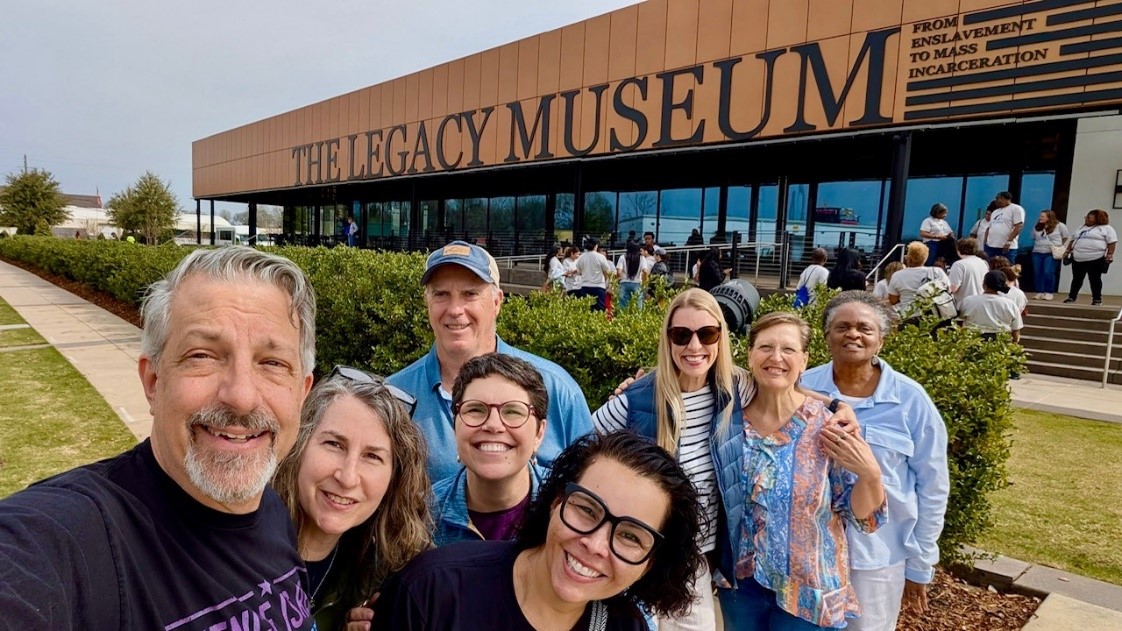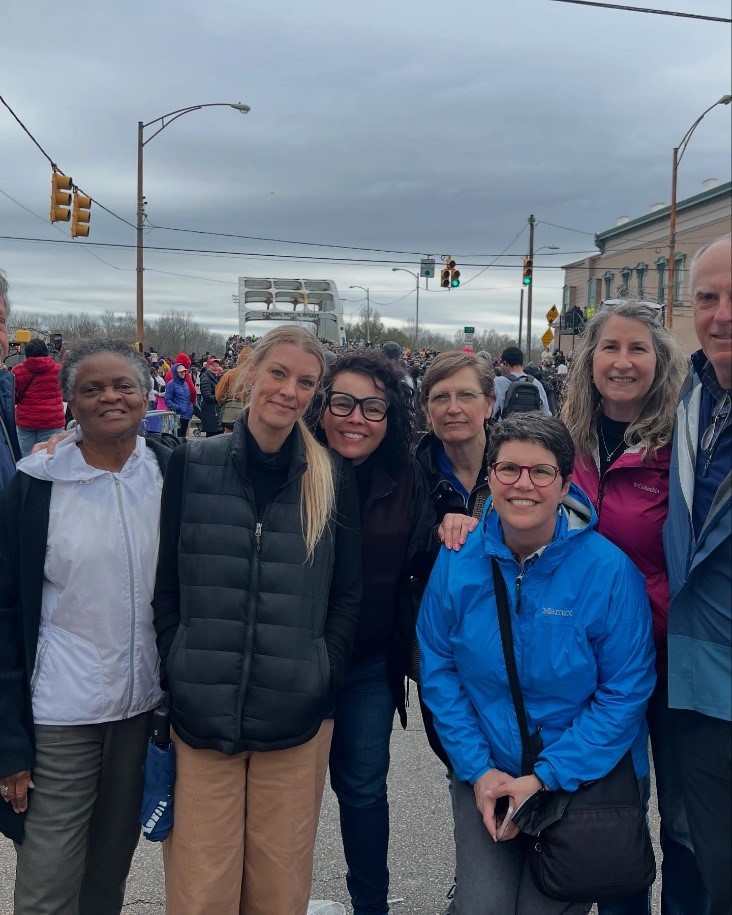
Following their study of James Cone’s work The Cross and the Lynching Tree, the Christ Church Episcopal Norcross racial healing book group recently made a pilgrimage to Selma and Montgomery to coincide with the 60th anniversary of Bloody Sunday.
The group explored the Legacy Museum and Freedom Monument Sculpture Park in Montgomery on Saturday before traveling to Selma to attend the Bloody Sunday commemoration service hosted by Brown Chapel AME. A number of Alabama’s congressional representatives joined House Minority Leader Hakeem Jeffries in speaking to the congregation. Bryan Stevenson, executive director of the Equal Justice Initiative and the impetus behind the Legacy Sites, was the keynote speaker.
 Inspired by the rousing speakers and the University of Alabama Afro-American Choir, the group from Christ Church joined the other marchers in crossing the Edmund Pettus Bridge.
Inspired by the rousing speakers and the University of Alabama Afro-American Choir, the group from Christ Church joined the other marchers in crossing the Edmund Pettus Bridge.
After a state trooper killed Jimmie Lee Jackson as he defended his mother from a beating on February 18, 1965, the Southern Christian Leadership Conference organized a march from Selma to Montgomery on March 7, or what became known as Bloody Sunday. The segregationist Governor of Alabama, George Wallace, sent state troopers to stop the marchers at the Edmund Pettus Bridge in Selma. When ordered to turn back, the marchers kneeled and prayed. They were beaten and tear gassed. John Lewis’s head was cracked open. Two marchers were killed. The violence was televised, and the light that was shone on the reality of the Jim Crow South served as a turning point and led to President Johnson signing the Civil Rights Act later that year. Each year, marchers retrace the steps of the 1965 activists.
CCE group member Kathy Smith describes the pilgrimage as “The weekend that we will remember for the rest of our lives. … I am undone and simultaneously ready to straighten my spine and get into good trouble.”
Book study leader Ella Rich shared, “After stopping for lunch before leaving Selma, as we were getting up to leave, we learned that the patrons at the next table over were also from the Atlanta area. We shared that we are the racial healing book group from the Episcopal church in Norcross and that we had made the pilgrimage as a follow-up to having read James Cone’s The Cross and the Lynching Tree. I could see that they were touched to learn that there were like-minded people close by willing to do the hard work of learning about and sitting uncomfortably with our history, listening, and standing in solidarity. I felt that we had given them hope.”
